Obstructive Sleep Apnea (OSA)
This information was reviewed and approved by Sheila Tsai, MD (2/28/2017).
Obstructive sleep apnea is a condition characterized by brief interruptions of breathing during sleep.
People with sleep apnea may have symptoms of: loud, frequent snoring; frequent episodes of apnea (breath holding); or daytime sleepiness.
Transcript
Hello, my name is Anne Cartwright. I'm a physician assistant in the Sleep Medicine Division of National Jewish Health. In the following video, I'll be discussing obstructive sleep apnea.
First, we'll talk about what sleep apnea is. Sleep apnea means that you actually stop breathing during your sleep. As you can imagine, it's a pretty serious health problem that impacts the body in several different ways. So first, we'll talk about the AHI. You may have heard your doctor talk about this. The AHI is a measure of how severe your sleep apnea is. It's actually a measure of how many times per hour you stop breathing. Less than five times per hour is considered normal. Five to fifteen times per hour would be mild sleep apnea. Fifteen to thirty times per hour is moderate sleep apnea. And anything over thirty times per hour is considered severe sleep apnea. And if you think about it, if you stop breathing thirty times per hour, that means you stop breathing on average of every two minutes, so that's fairly significant.
So the AHI is actually made up of two different components, apneas and hypopneas. Apnea means that you actually completely stop breathing for a period of ten seconds or more. Hypopnea means that you haven't stopped breathing completely, but your breathing is actually diminished to the point where your oxygen level decreases. So we add all the apneas, all the hypopneas, and divide them by how long you're sleeping, and that gives us the AHI. Again, how many times per hour you stop breathing.
There are other kinds of sleep apnea, but obstructive sleep apnea is certainly the most common. And when people are talking about sleep apnea, this is usually what they're referring to. So during OSA, your airway actually becomes blocked or obstructed while you're sleeping. You're trying to breathe, you just don't have an airway or a tube to actually breathe through. So why does this happen? Well, when we sleep, our muscles relax, and that includes the muscles of our upper airway and the tongue. Everything gets kind of loose and floppy and falls back, and our airway actually collapses, making it so that we can no longer breathe. Anything that makes your airway smaller to begin with or more floppy to begin with actually puts you at risk for having sleep apnea.
The biggest risk factor for having OSA is being obese. 70% of people with sleep apnea have it because they're obese or overweight, which makes sense when you consider that you have more gravity and more weight literally pressing down on your airway when you're trying to breathe. Also, when you gain weight, you get fatty deposits that grow on the inside around your airway that kind of smoosh it down and make it narrow and smaller to begin with. If you measure the size of your neck, that can give you a good indication as to whether or not you might be at risk for having OSA. In men, having a neck circumference larger than 17 inches, and for women, a neck circumference larger than 16 inches puts you at risk.
Some other risk factors for OSA are any other structural abnormalities that would make your airway again smaller to begin with. If you have large tonsils or large adenoids obstructing your airway, this is usually more of an issue in children with sleep apnea, not so much in adults, but it can sometimes be a factor. If you have a large uvula, the uvula is a little hangy down flappy thing in the back of your throat that you can see when you look in the mirror. If you've got a large tongue, if the palate or the roof of your mouth is really long or narrow, or if you have any craniofacial abnormalities, like if you have a small jaw, if your jaw is pushed back very far into your head. Most people with Down syndrome have OSA because they have very small bone structure and they have very large tongues, so their airways become very crowded.
Besides structural things, there are many other things that can put you at risk for OSA as well. Smoking puts you at risk. When we smoke, you get inflammation in your airway, which makes your airway smaller. Using alcohol, particularly before bed, this relaxes the muscles in your airway, making it more floppy and more likely to collapse. Medications such as muscle relaxants, sedatives, or narcotic pain medications, and patients with a history of heart failure, stroke, or any neuromuscular weakness are also more at risk. Snoring is a big risk factor and is also a sign or symptom of sleep apnea, though not everyone that snores has sleep apnea. Sleep apnea does tend to run in families. As you age, you also become more at risk, and that's because as we age, we lose muscle tone and our muscles get more floppy. Sleep apnea is more common in males, although once females hit menopause and they lose that estrogen drive, they have less muscle tone, and in older adults, we see that males and females have sleep apnea in equal rates.
More than 12 million Americans are estimated to have obstructive sleep apnea (OSA). Because people with sleep apnea don't usually get restful sleep at night, they may be excessively sleepy during the day, which can lead to difficulties at school and work and even to car accidents. Untreated severe OSA is associated with a higher risk for insulin resistance, heart attack, high blood pressure and stroke, and many people with these conditions have undiagnosed OSA. Once OSA is diagnosed, it can be treated, which reduces the risk of diseases that often accompany the syndrome.
Several structures of the nose, mouth and throat can be involved in OSA. The uvula is the piece of tissue that hangs down from the soft palate, at the back of the roof of the mouth. Tonsils are on either side of the throat at the back of the mouth; they are made of lymphoid tissue, part of the body's immune system. The position of the tongue can also affect nighttime breathing. These structures can contribute to OSA by obstructing airflow. Because of greater work to pull in air, the airway collapses due to the strong negative pressure produced by the body's effort to breathe.
Types of Sleep Apnea
There are two types of sleep apnea: obstructive and central.
Obstructive Sleep Apnea (OSA)
OSA is the most common type of sleep apnea. This is caused when the upper airways collapse during sleep, and air cannot flow into or out of one's nose or mouth, although efforts to breathe continue. Breathing stops for several seconds to over a minute, and levels of blood oxygen may drop during these episodes. Each episode can cause brief awakenings, although the person may not be aware of these brief awakenings.
Central sleep apnea (CSA)
CSA is a much less common condition, and occurs when the brain does not send the appropriate signals to the breathing muscles for respiration. Since some people with central sleep apnea have other medical conditions such as congestive heart failure or stroke, treating those conditions may improve the central sleep apnea, too.
Some people have a mix of both obstructive and central sleep apnea.
Continuous positive airway pressure, or CPAP, may help people with obstructive or central sleep apnea. Some people with central sleep apnea may require bi-level positive pressure therapy (BPAP or BiPAP) or more advanced PAP therapies.
Acetazolamide may be prescribed for some people with central sleep apnea. Acetazolamide is normally prescribed for epilepsy, glaucoma and altitude sickness, but some studies have found that it decreases the apnea episodes in central sleep apnea if taken at bedtime.
What is Obstructive Sleep Apnea (OSA) in Adults?
Obstructive sleep apnea is a problem that affects breathing while sleeping. If OSA goes untreated, it can cause serious health problems to develop.
During sleep, OSA blocks air (obstruction) from flowing normally into the lungs and causes people to stop breathing for short periods of time when asleep. This block in airflow is caused by the collapse of the soft tissues in the back of the throat and tongue during sleep. Certain factors tend to worsen obstructive sleep apnea, such as sleeping on one’s back, weight gain and alcohol.
Obstructive Sleep Apnea is Common In:
- Men
- Women after menopause
- People over the age of 65
Risk Factors for Developing OSA:
- Being overweight
- Large tonsils or adenoids
- Jaw problems
- Family history of OSA
What is Obstructive Sleep Apnea (OSA) in Children?
Signs of sleep apnea in children can differ slightly from those of adults. Symptoms include:
- Difficulty waking and/or irritability in the morning
- Hyperactivity or inattentiveness in the classroom
- Arching their neck to open airway while sleeping
- Snoring, especially if it is loud and occurs every night
- Breathing pauses during sleep, or frequently choking or gasping during sleep
- Nasal congestion, nasal voice, difficulty breathing through the nose
- Restless sleep and/or frequent night awakenings
Common Causes of Obstructive Sleep Apnea in Children
- Being overweight or obese
- Allergies, asthma, frequent sinus infections and gastroesophageal reflux disease (frequent heartburn and sour taste)
- Having a close family member with sleep apnea
- Craniofacial anomalies such as a narrow facial bone structure or a small jaw
- Underlying neuromuscular disorder such as cerebral palsy
- Genetic condition such as Down Syndrome or Prader-Willi Syndrome
To learn more about symptoms, dangers and treatment view the patient information from the American Thoracic Society’s Patient Information series on Obstructive Sleep Apnea.
National Jewish Health experts provided information on this topic for use on the U.S. News & World Report website.
Our Specialists
-
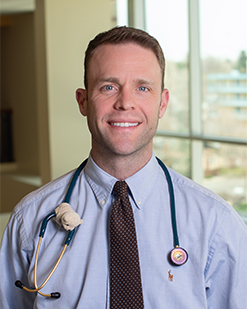
James Brock, DO
-
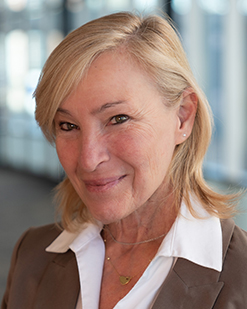
Alicia C. Della Volpe, MD
-
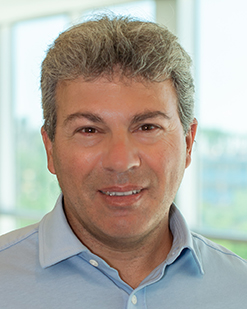
Nir M. Goldstein, MD, FCCP
-
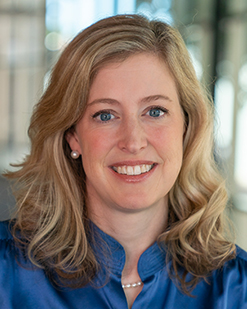
Chafen Watkins Hart, MD
-
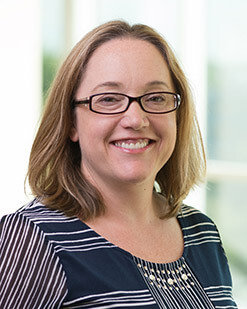
Rebecca C. Keith, MD
-
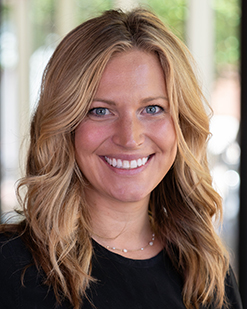
Brianna Lahman, PA
-
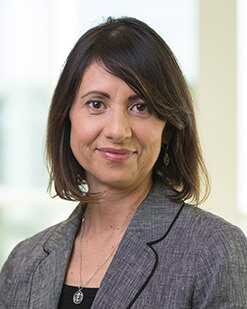
Clara Restrepo, MD
-
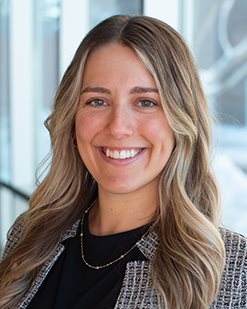
Savannah Shannon, PA-C
-

Sheila Tsai, MD
-
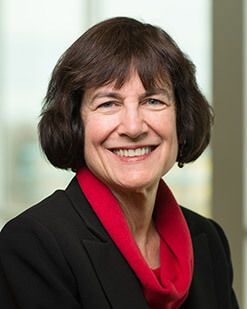
Pamela L. Zeitlin, MD, MPhil, PhD
 Clinical Trials
Clinical Trials
For more than 100 years, National Jewish Health has been committed to finding new treatments and cures for diseases. Search our clinical trials.
